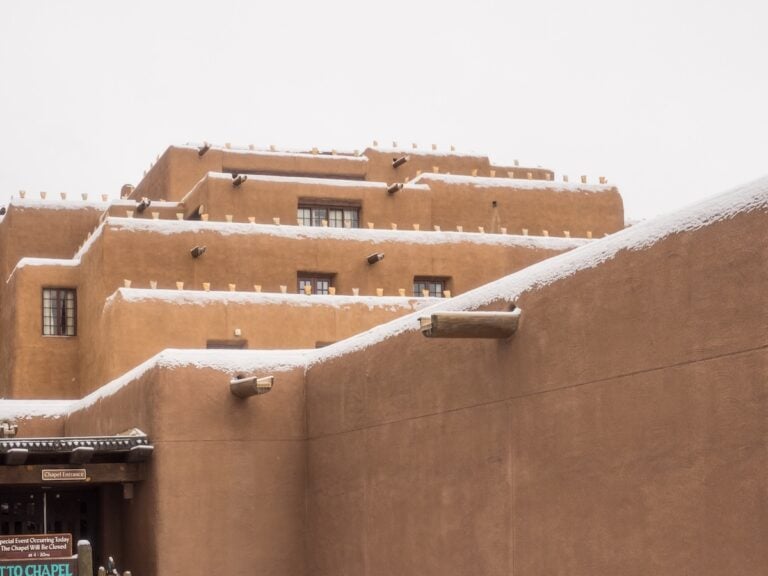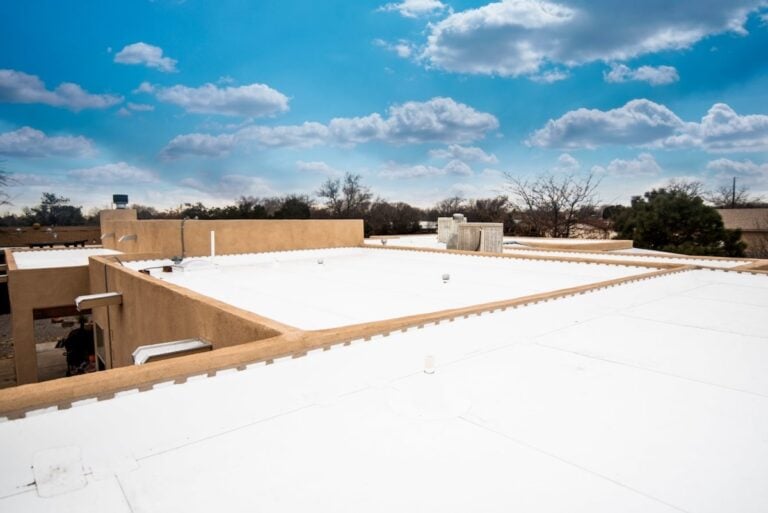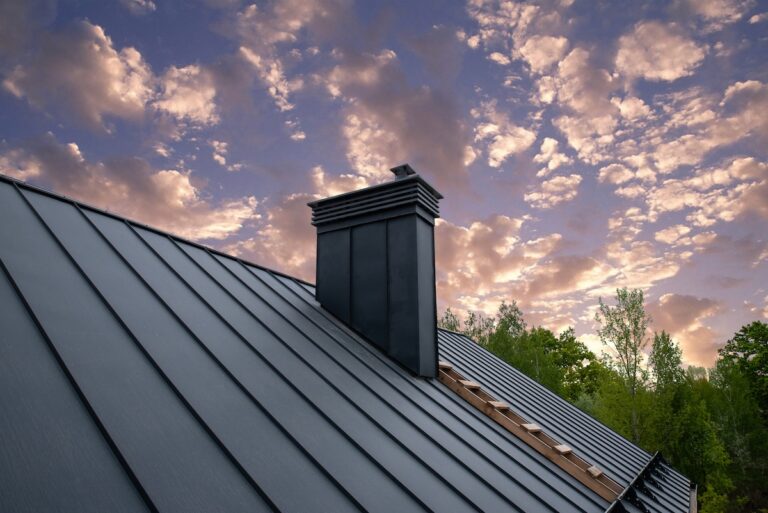5 Types of Metal Roofing to Consider In 2025 (Materials, Styles…)
Metal roofing has become one of the most popular choices for homeowners and businesses across New Mexico. With its exceptional durability, energy efficiency, and aesthetic appeal, metal roofing offers long-term value that traditional materials simply can’t match. Whether you’re building a new home or replacing an aging roof, understanding the different types of metal roofing available will help you make an informed decision that protects your property for decades to come.
This comprehensive guide explores the various metal roofing materials, styles, and considerations you need to know when choosing the perfect metal roof for your property. We’ll cover everything from steel and aluminum options to copper and zinc alternatives, plus the different profile styles that can complement your building’s architecture. You’ll also learn about the key benefits of metal roofing, installation considerations, and maintenance requirements to help you determine if metal roofing is the right choice for your needs. Here’s what we’ll cover:
- Benefits of metal roofing
- 5 types of metal roofing materials
- Metal roofing styles and profiles
Benefits of Metal Roofing
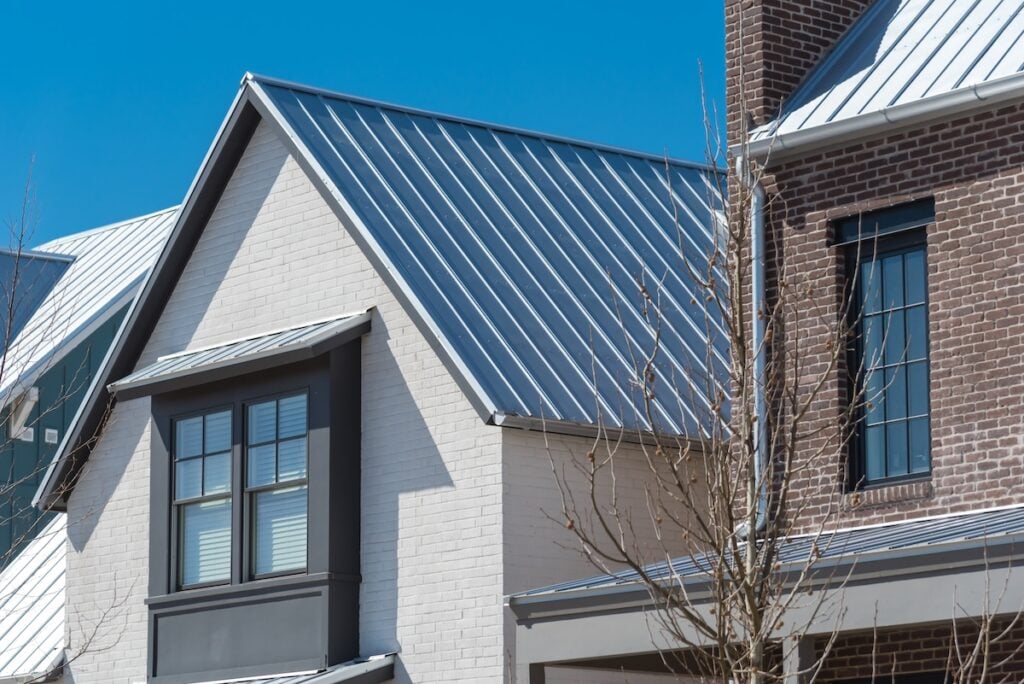
Metal roofing delivers exceptional value through multiple key advantages that make it an outstanding investment for your property. The durability of metal roofing systems far exceeds traditional materials, especially when handled by a reliable roofing company, lasting 40-70 years compared to 15-25 years for asphalt shingles.
Energy efficiency represents another significant benefit of metal roofing. The reflective properties of metal help reduce cooling costs by reflecting solar heat away from your building. This can result in energy savings of 10-25% on cooling costs, making metal roofing particularly valuable in New Mexico’s sunny climate.
Weather resistance makes metal roofing ideal for areas that experience extreme weather conditions. Metal roofs can withstand high winds up to 140 mph, resist hail damage, and won’t crack, warp, or rot like other materials. Fire resistance is another crucial benefit, as metal roofing materials are non-combustible and can help protect your property from fire damage.
Key Benefits of Metal Roofing:
- Exceptional durability with a lifespan of 40-70 years
- Reflective properties for improved energy efficiency and reduced cooling costs
- Superior weather resistance, including high wind and hail protection
- Fire-resistant materials for added safety
- Low maintenance, requiring only periodic inspections and cleaning
5 Types of Metal Roofing Materials

Understanding the types of metal roofing materials is crucial for choosing the right option for your home or building. Each material offers unique benefits like durability, energy efficiency, and style, ensuring it meets your specific needs.
1. Steel Roofing
Steel roofing stands as the most popular metal roofing choice due to its strength, affordability, and versatility. Galvanized steel features a zinc coating that provides excellent corrosion resistance, while galvalume steel combines zinc and aluminum coatings for enhanced protection against rust and weathering.
Steel roofing offers exceptional strength-to-weight ratios, making it suitable for both residential and commercial applications. The material can support heavy snow loads and resist impact damage from hail or falling debris. Modern steel roofing systems come with advanced coating systems that provide decades of protection against fading, chalking, and corrosion.
2. Aluminum Roofing
Aluminum roofing provides superior corrosion resistance, making it an excellent choice for coastal areas or regions with high humidity. The lightweight nature of aluminum reduces structural load requirements while maintaining excellent durability and weather resistance.
Natural corrosion resistance means aluminum roofing won’t rust, even in harsh environments. The material also offers excellent thermal performance, expanding and contracting less than steel under temperature changes. This stability helps prevent thermal stress and extends the roof’s lifespan.
3. Copper Roofing
Copper roofing represents the premium option in metal roofing materials, offering unmatched beauty and longevity. With proper installation and maintenance, copper roofs can last over 100 years while developing an attractive patina that many property owners find appealing.
The natural antimicrobial properties of copper help prevent moss and algae growth, reducing maintenance requirements. Copper’s malleability makes it ideal for complex roof designs and custom architectural details. While copper roofing requires a higher initial investment, the exceptional longevity and timeless appeal make it a valuable choice for distinctive properties.
4. Zinc Roofing
Zinc roofing combines durability with environmental sustainability, as zinc is fully recyclable and has a lower environmental impact than many other roofing materials. The material develops a protective patina over time that enhances weather resistance and creates an attractive appearance.
Self-healing properties allow zinc to repair minor scratches and surface damage naturally through oxidation. This unique characteristic helps maintain the roof’s protective qualities and appearance over time. Zinc roofing typically lasts 60-100 years with minimal maintenance requirements.
5. Tin Roofing
Traditional tin roofing, while less common today, still offers certain advantages for specific applications. Modern “tin” roofing typically refers to terne-coated steel, which provides good corrosion resistance at a moderate cost.
Tin roofing works well for historic restoration projects or applications where traditional appearance is important. The material offers decent durability and weather resistance, though it may require more maintenance than newer metal roofing options.
Metal Roofing Styles and Profiles
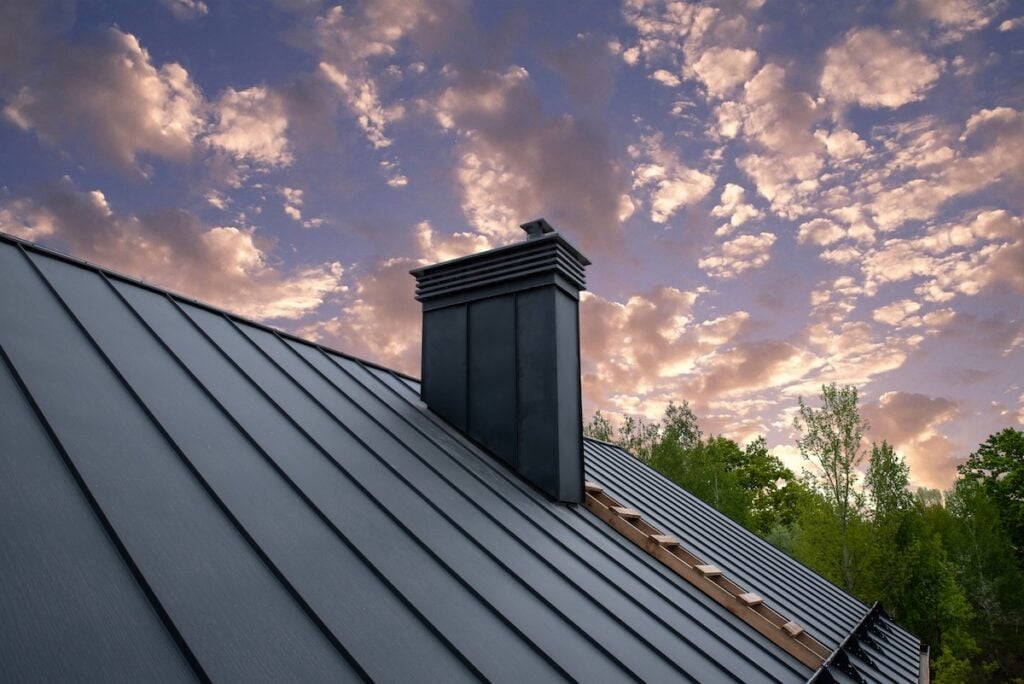
Metal roofing comes in various profiles and styles to complement different architectural designs and functional requirements. Understanding these options helps you choose the best style for your property’s aesthetic and performance needs.
Standing Seam Metal Roofing
Standing seam metal roofing features raised seams running vertically along the roof panels. The concealed fastener system creates clean lines and eliminates penetrations through the roofing material, reducing the risk of leaks. This style is ideal for modern and contemporary architectural designs.
Corrugated Metal Roofing
Corrugated metal roofing uses a wavy pattern that provides structural strength and allows water to drain efficiently. This traditional profile is well-suited for agricultural, industrial, and rustic residential applications. Its exposed fastener system makes installation more economical while still offering excellent weather protection.
Metal Shingles and Tiles
Metal shingles and tiles replicate traditional roofing materials while offering the performance benefits of metal. These systems can mimic slate, wood shakes, or clay tiles, making them a versatile choice for historic or architecturally specific applications.
Ribbed Metal Panels
Ribbed metal panels feature raised ribs that enhance structural strength and visual appeal. These panels are suitable for residential and commercial applications, offering good weather resistance and a modern aesthetic.
Regardless of the style you choose, proper flashing is a critical component of every metal roofing system. Flashing, which is typically a thin metal material, is installed around roof features like chimneys, vents, and valleys to create a watertight seal and prevent leaks. It is the first line of defense at the most vulnerable points of your roof, ensuring a durable and leak-free installation for years to come.
Maintenance and Longevity
Metal roofing requires minimal maintenance compared to other materials, but routine roof inspections help ensure optimal performance throughout the roof’s lifespan. Annual inspections should check for loose fasteners, damaged panels, and proper drainage.
Cleaning Requirements
Cleaning is usually minimal, involving the removal of debris from gutters and roof surfaces. Most metal roofing systems are self-cleaning with normal rainfall, though occasional washing can improve appearance in dusty environments.
Repair Procedures
Repairs for metal roofing are generally straightforward when handled by qualified professionals. Minor issues, such as loose fasteners or small scratches, can be quickly addressed to prevent larger problems.
Expected Lifespan
The lifespan of metal roofing varies by material. Steel and aluminum systems typically last 40-60 years, while copper and zinc systems can exceed 100 years with proper maintenance.
Why Choose Cabezon Roofing for Your Metal Roofing Project
When it comes to choosing the right type of metal roofing, whether it’s standing seam, corrugated panels, metal shingles, or stone-coated steel, the options can feel overwhelming. Each style offers a unique and long-standing roofing solution, from unmatched durability and energy efficiency to sleek, modern aesthetics. At Cabezon Roofing, we specialize in helping homeowners and business owners navigate these choices to find the perfect fit for their property and budget. With our deep understanding of New Mexico’s unique climate, top-tier materials, and meticulous installation techniques, we ensure your roof is built to last.
Trust our experienced team to deliver a roofing solution that offers both performance and peace of mind. Ready to get started? Contact Cabezon Roofing today for a free consultation and estimate, and let us help you take the first step toward a roof you can rely on for decades to come.
